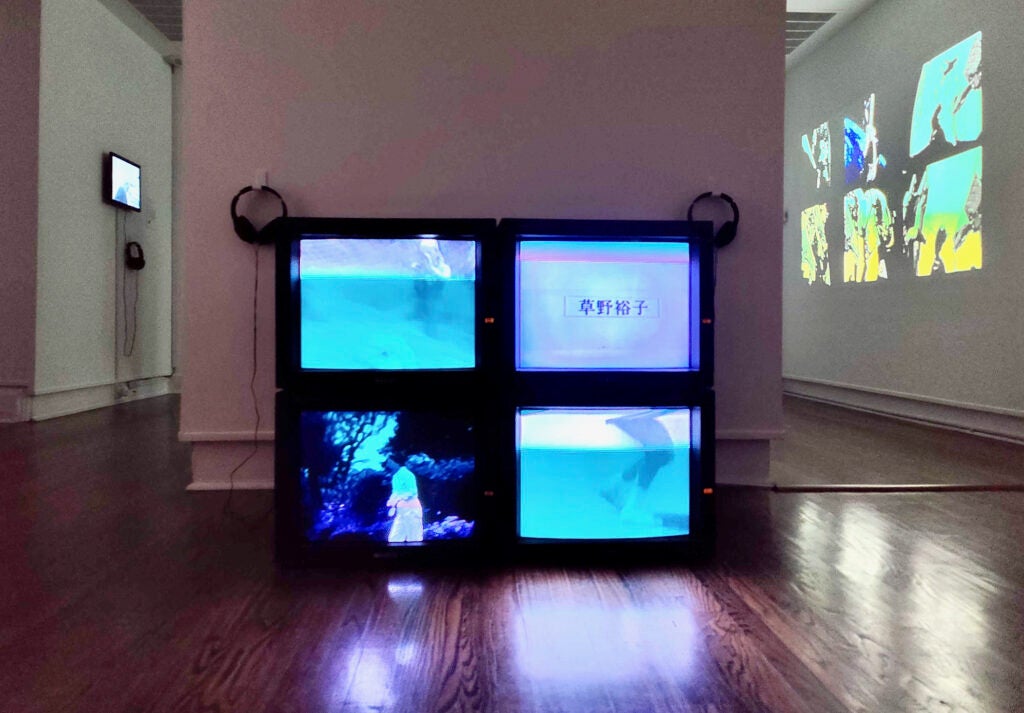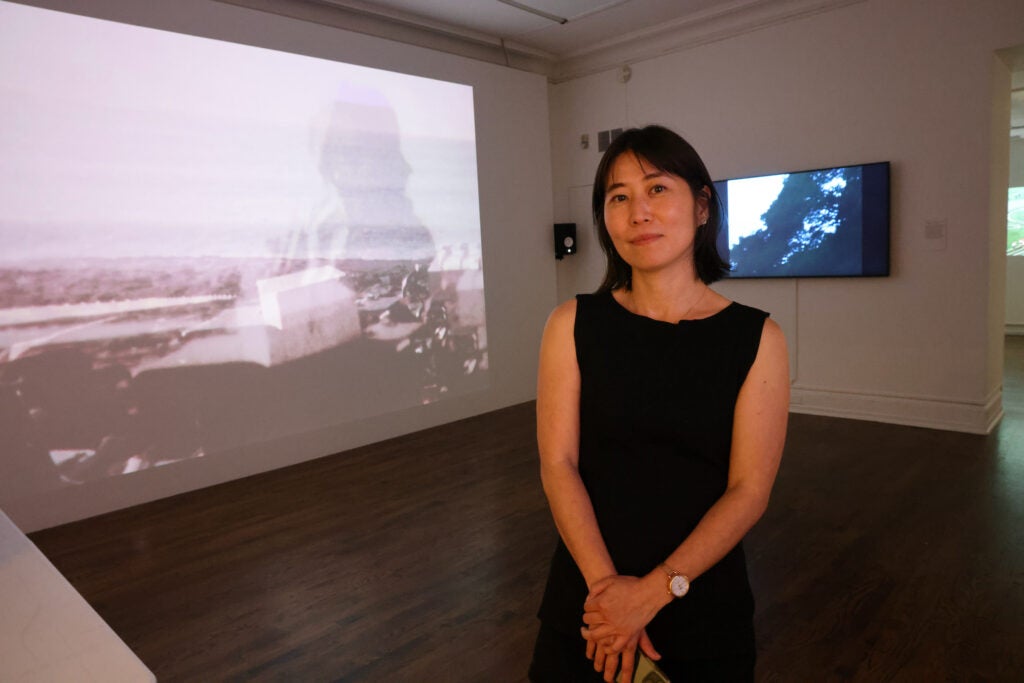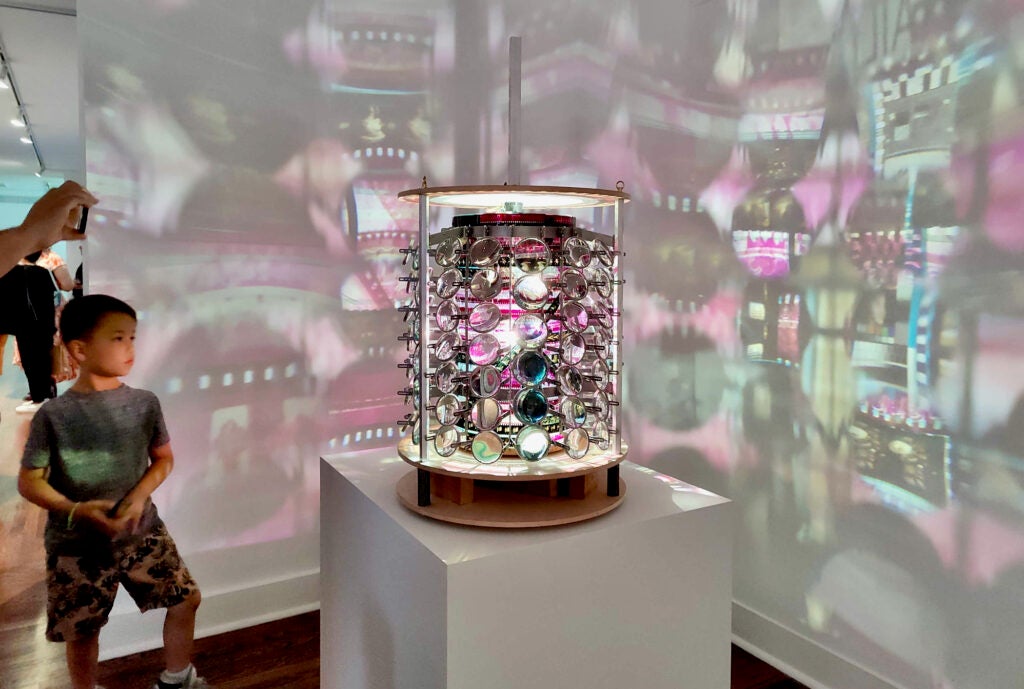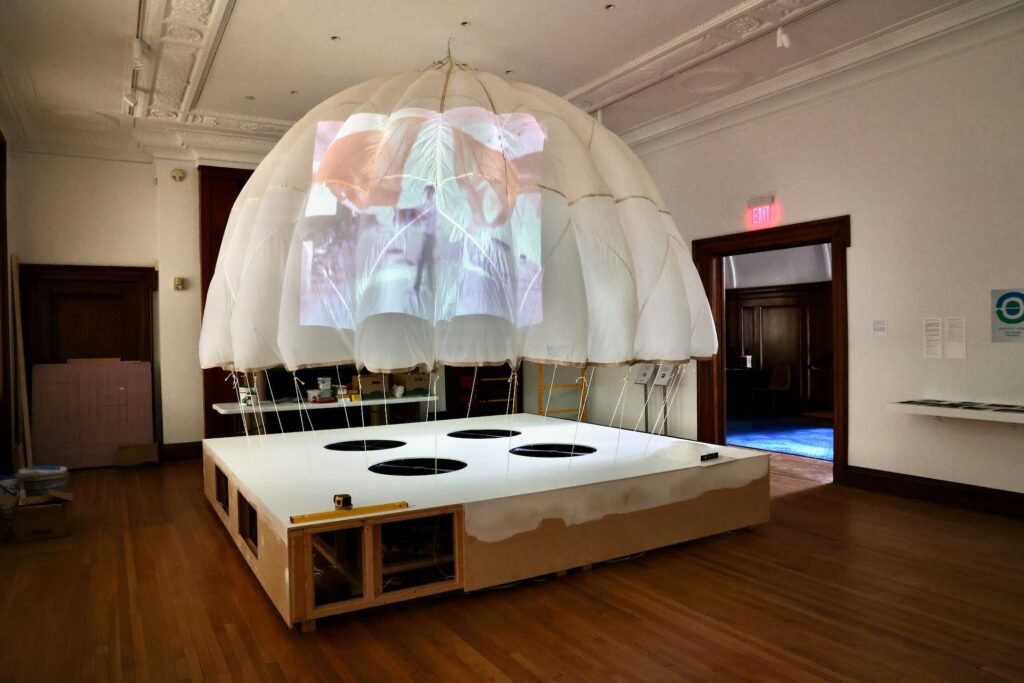From Philly and the Pa. suburbs to South Jersey and Delaware, what would you like WHYY News to cover? Let us know!
The Philadelphia Art Alliance is buzzing with screeching noise music, the clickety-clack of a 16mm projector, and electric fans billowing parachute cloth upward into a dome so it can act as a projection screen.
This could be the last hurrah before the building — the former mansion of playwright and Alliance co-founder Christine Wetherill Stevenson — goes quiet. The building became the home of the Art Alliance in 1926 and operated as an independent organization until 2017, when the University of the Arts acquired it. Two weeks ago, UArts abruptly shut down, leaving the future of its assets uncertain.

The shutdown happened seven days before the group Collaborative Cataloguing Japan was to open its show “Community of Images: Japanese Moving Image Artists in the U.S. 1960s – 1970s,” a retrospective of a moment in international art when Japanese video artists were permitted to travel to New York for the first time since World War II, and soak in the American avant-garde.
Ann Adachi-Tasch, director of Collaborative Cataloguing Japan, sought special permission from UArts’ office of the president to open the exhibition, even though UArts is technically shuttered. Through an arrangement with chief of staff Franklyn Canton, UArts will supply security staff to open and close the building, Adachi-Tasch said, and CCJ will hire its own gallery attendants and do its own custodial work.

CCJ has launched a crowdfunding campaign to cover any unexpected costs of keeping the Art Alliance building open until Aug. 9.
CCJ has had a run of bad luck with its own exhibitions. Its inaugural exhibition four years ago, “More Than Cinema” at Pioneer Works in Brooklyn, opened in February 2020 but closed almost immediately due to COVID-19 shutdowns. It reopened that fall. “Community of Images” is its second exhibition and nearly met the same fate.
“When the announcement happened [to shut down UArts], this was 80% done,” Adachi-Tasch said. “They knew it was a Pew grant. It’s quite a large grant. Franklyn Cantor really supported us and became that liaison, pushing it for us, which I’m so grateful for.”
Assembling and installing “Community of Images” was no small feat. It took years to locate many of the elements.
For example, “Shelter 9999” was made by the Japanese experimental filmmaker Takahiko Iimura and the New York sound artist Alvin Lucier. They overlaid still images on top of a film projection while performing improvised noise music. After its initial 1966 performance, the pieces of Shelter scattered into different archives in Tokyo and New York. The curators discovered parts of it in the New York Public Library.

Another piece, “Liquid Projector” by Ko Nakajima, is a motorized sculpture made of 16mm film and colored glass that spins light around the room like a psychedelic, film-based disco ball. The artist made it in 1969 but lost track of it.
“The artist didn’t know what happened to the original,” Adach-Tasch said. “So he made a design, and [Philadelphia exhibition designer] Greenhouse Media recreated a 2024 version.”






